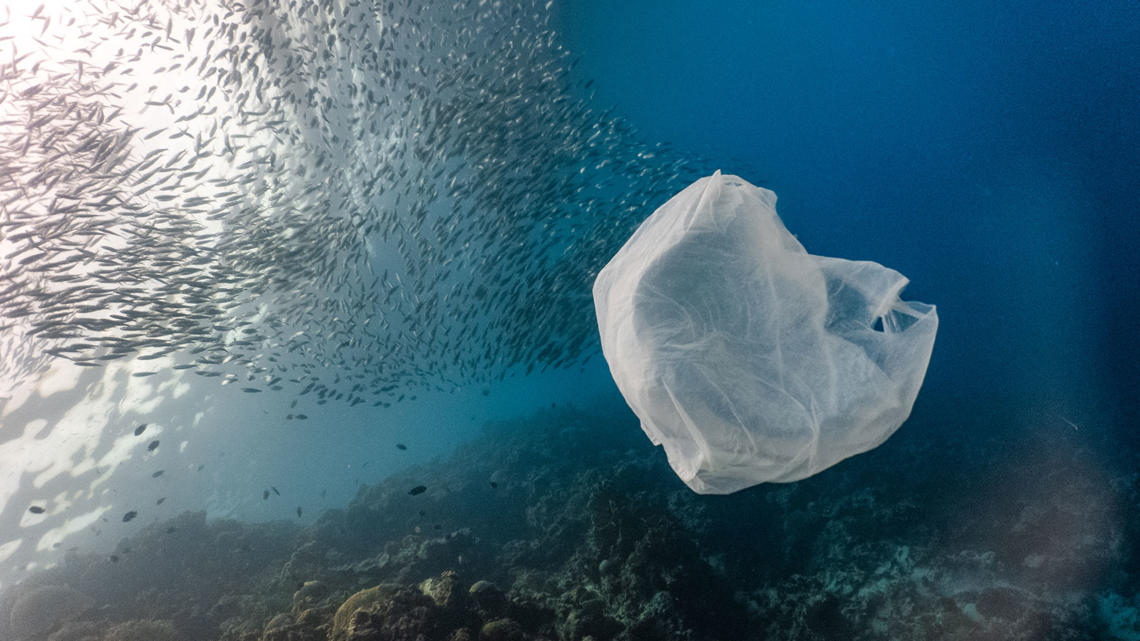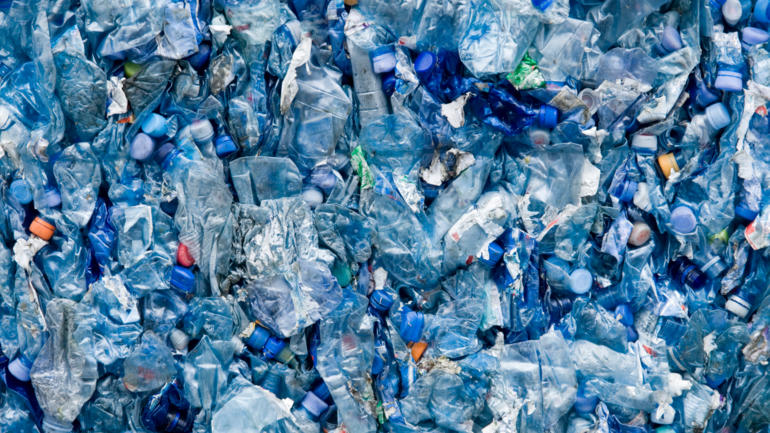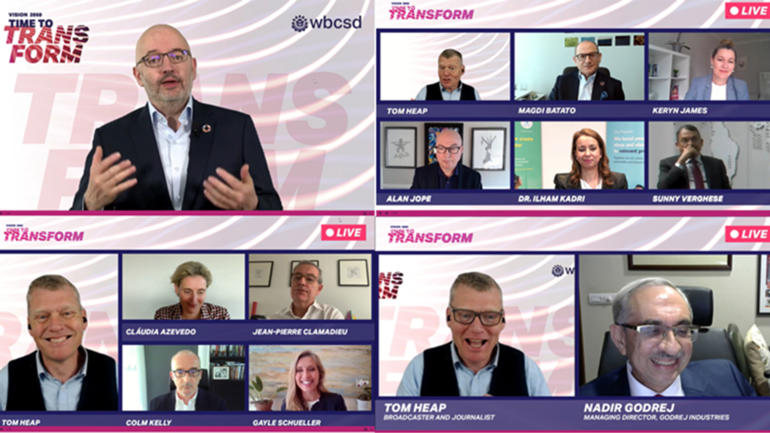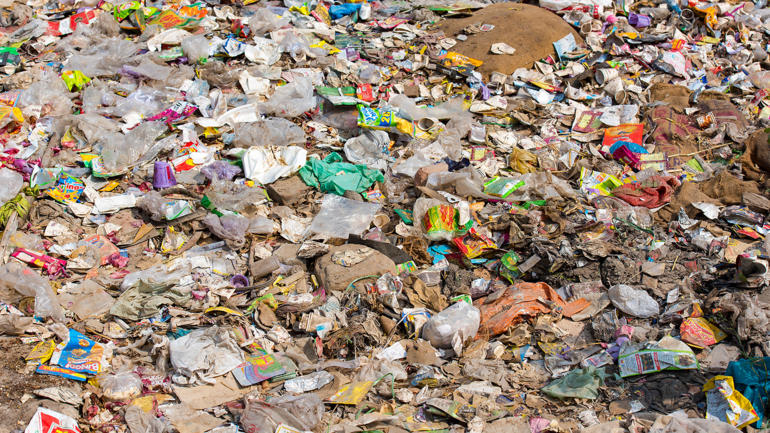The world’s current economic system is reliant on access to low-cost and readily available resources. The wastes building up in our coastal and marine environments are a notable symptom of this take-make-and-dispose model, also known as the linear economy. In recent years, single-use plastic packaging waste has become a major concern: in 2015, this accounted for approximately 47% of the plastic waste generated globally.
The qualities that make this type of material effective in preserving goods and being produced in high volumes are the same ones that make it problematic -- single-use plastic packaging is often light, cheap, flexible, and lasts for thousands of years. However, its low value makes it difficult to recycle and resell, which makes it more susceptible to mismanagement and improper disposal.
Asia lies at the center of the global plastic pollution crisis resulting from this linear economy. In 2015, the Ocean Conservancy estimated that up to 60% of marine plastic pollution comes from five countries in Asia: the Philippines, Indonesia, Thailand, Viet Nam, and the People’s Republic of China (PRC). One approach to reducing single-use plastic packaging waste is transitioning to a circular economy. A circular economy redefines current production and consumption patterns in a way where business and growth support positive economic, social, and environmental benefits throughout supply chains, business models, and life cycles, from the choice of raw materials, design of products/services, to recycling and end-of-life. Like a linear economy, a circular economy still aims to meet basic human needs and generates economic benefits but leaves minimal environmental impact. Effective resource management in a circular economy could create nine to 25 million jobs. Private investors could save up to US$2.9 trillion a year by 2030 as a result of the lowered costs of raw materials and the promotion of employment and innovation.
The coronavirus disease (COVID-19) pandemic has not only hit the pause button on global economies and daily life, but also disrupted the waste value chain and significantly increased medical and plastic waste. This presents an opportunity to rebuild using more sustainable models, create green and resilient livelihoods, and advance technology innovation. Technology innovation can help businesses, governments, and communities transition to an inclusive circular economy faster and more efficiently.
Five approaches can drive this shift:
1. Increase investments in effective integrated solid waste management systems and infrastructure.
One solution is to digitize processes in the waste value chain. In the recently concluded ADB Digital Challenge for Digitizing Waste Collection through Handling, Tracking, and Recycling to Disposal, the winning group RECITY, demonstrated how their mobile application integrates high-level GIS data, community engagement, transparency, and women’s empowerment, leading to higher revenues for the most vulnerable persons in the supply chain.
2. Strengthen governmental policies, regulations, and commitments for a circular plastics economy.
We need the right enabling environment to transform the way that plastic packaging and products are designed, used, and recycled to boost the market and create a new plastics economy. The government of Indonesia set an ambitious target to reduce marine plastic waste by 70% by 2025. Redesign of plastic products and packaging for reuse or high-value recycling is one of the five strategies under its Plan of Action on Marine Debris. This includes developing a world-leading packaging design program or institute in Indonesia, which will bring together government, companies and academia to ensure that design is tailored to the particular needs of emerging-market waste collection and recycling systems.
3. Boost stakeholder engagement and value chain commitments to combat plastic pollution and introduce circular economy practices.
Several alliances and coalitions involving civil society organizations, corporations, waste collectors, recyclers, and governments have been formed at the national, regional, and global levels to achieve waste reduction and recycling targets, such as the Global Plastic Action Partnership, National Plastic Action Partnerships, Alliance to End Plastic Waste, Break Free from Plastic, and Thailand’s Public-Private Partnership for Plastic and Waste Management.
4. Rethink current delivery models and invest in innovation, pilots, and demonstration projects.
In many countries in Asia, many personal care and home care products come in single-use sachets. It has been estimated that the Philippines disposes of 163 million single-use sachets per day. In 2018, the Sea Waste Education to Eradicate Plastic (SWEEP) project launched a pilot of micro-refilling systems in eight small convenience stores in the Philippines. Fast-moving household goods such as fabric conditioner, cooking oil, vinegar, and soy sauce were dispensed into reusable or repurposed containers in incremental volumes and price points similar to products in single-use sachets. In just seven months, the demonstration project was able to prevent the use and disposal of 45,000 pieces of plastic.
5. Learn from others.
The circular economy is unknown territory for many governments and organizations, but there are successful case studies and working models to draw inspiration from. The People’s Republic of China has made significant headway. Since 2016, its Extended Producer Responsibility plan has been engaging the electronics, automobiles, lead-acid batteries, and packaging industries. The law requires producers to establish a system for recycling used or end-of-life products by themselves or third parties. The amount of materials recovered and recycled must match the producers’ sales volume.
Recognizing the valuable role that technology innovation plays in the transition to a circular economy, ADB has launched the Technology Innovation Challenge (TIC) to prevent plastic waste. The TIC seeks digital or mechanical plastic waste preventive technologies that could support (i) the transformation of current delivery systems of fast-moving consumer goods, such as food, beverages, and personal or home care products to reuse and refill models, and/or (ii) reverse logistics services, which are designed to return used goods and packaging back to the business or retailers and onwards to a destination that captures value or responsibly disposes of the products and materials. The deadline for submitting Expressions of Interest is on November 27, 2020.
Single-use plastic waste is a big problem that requires big solutions. Technology innovation is a key enabler of the transition to an inclusive, just, and science-based circular economy.
This article was originally published by the Asian Development Bank








